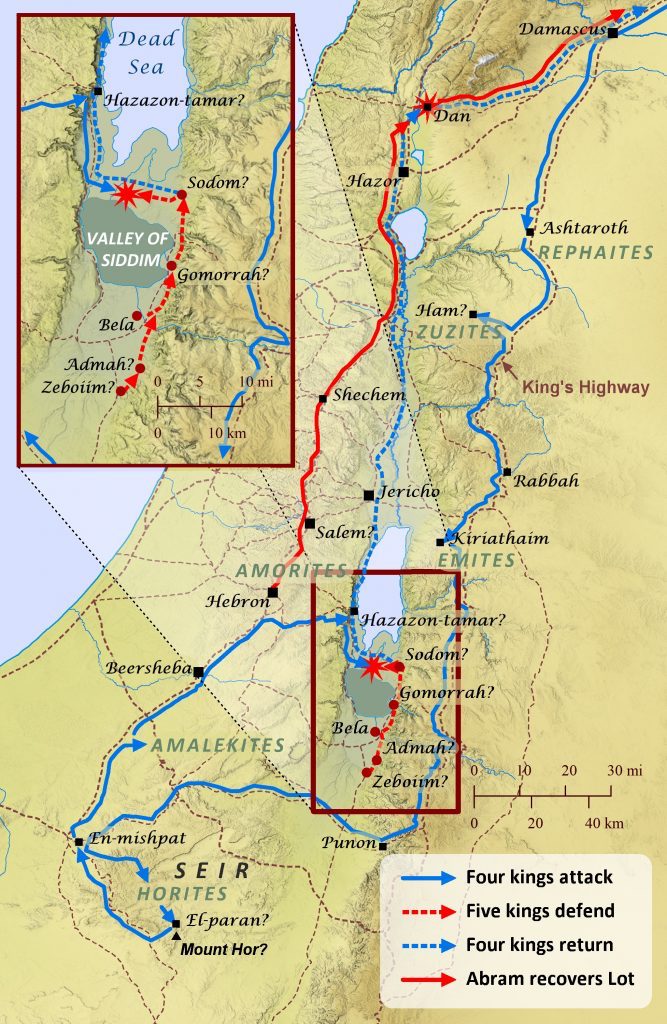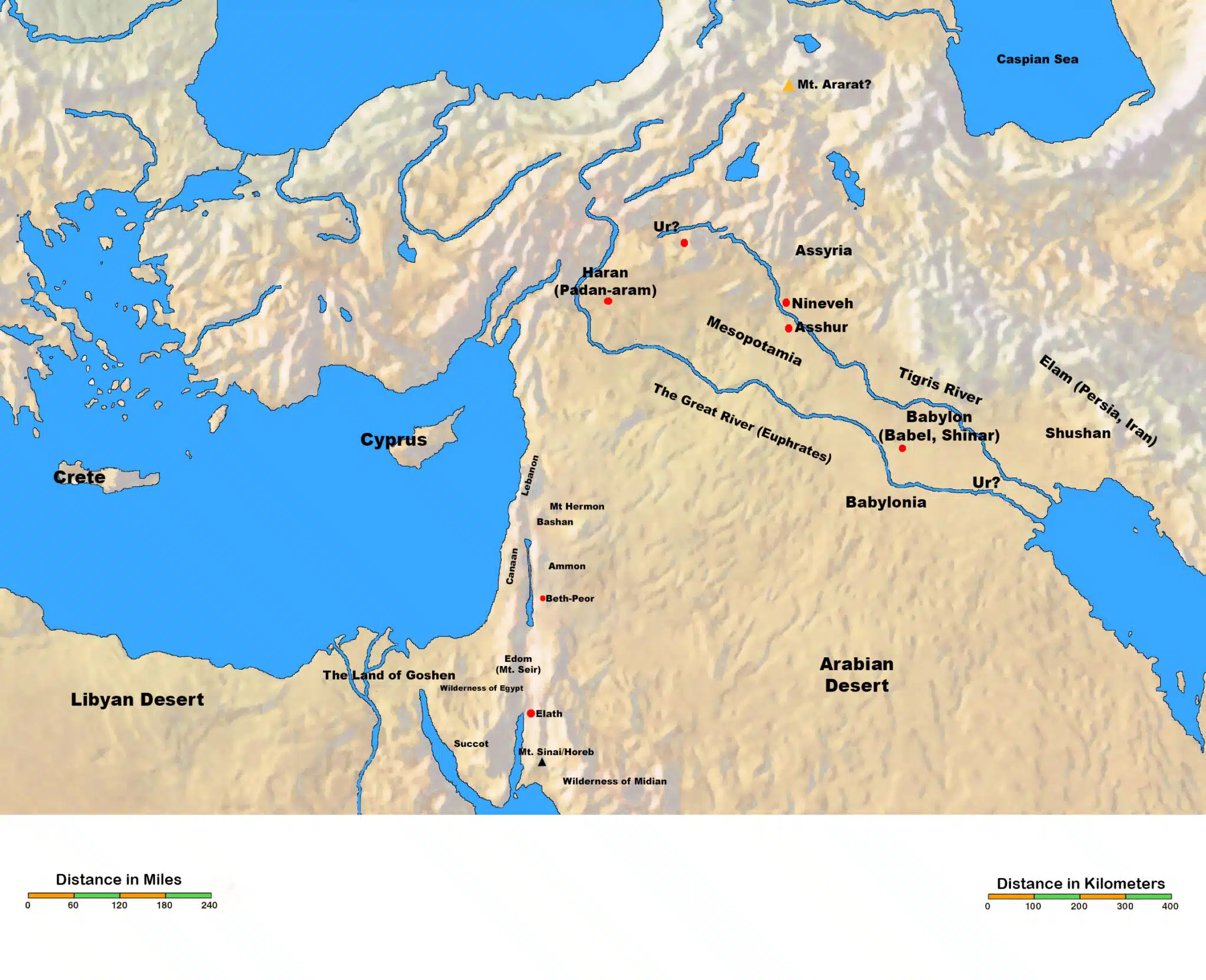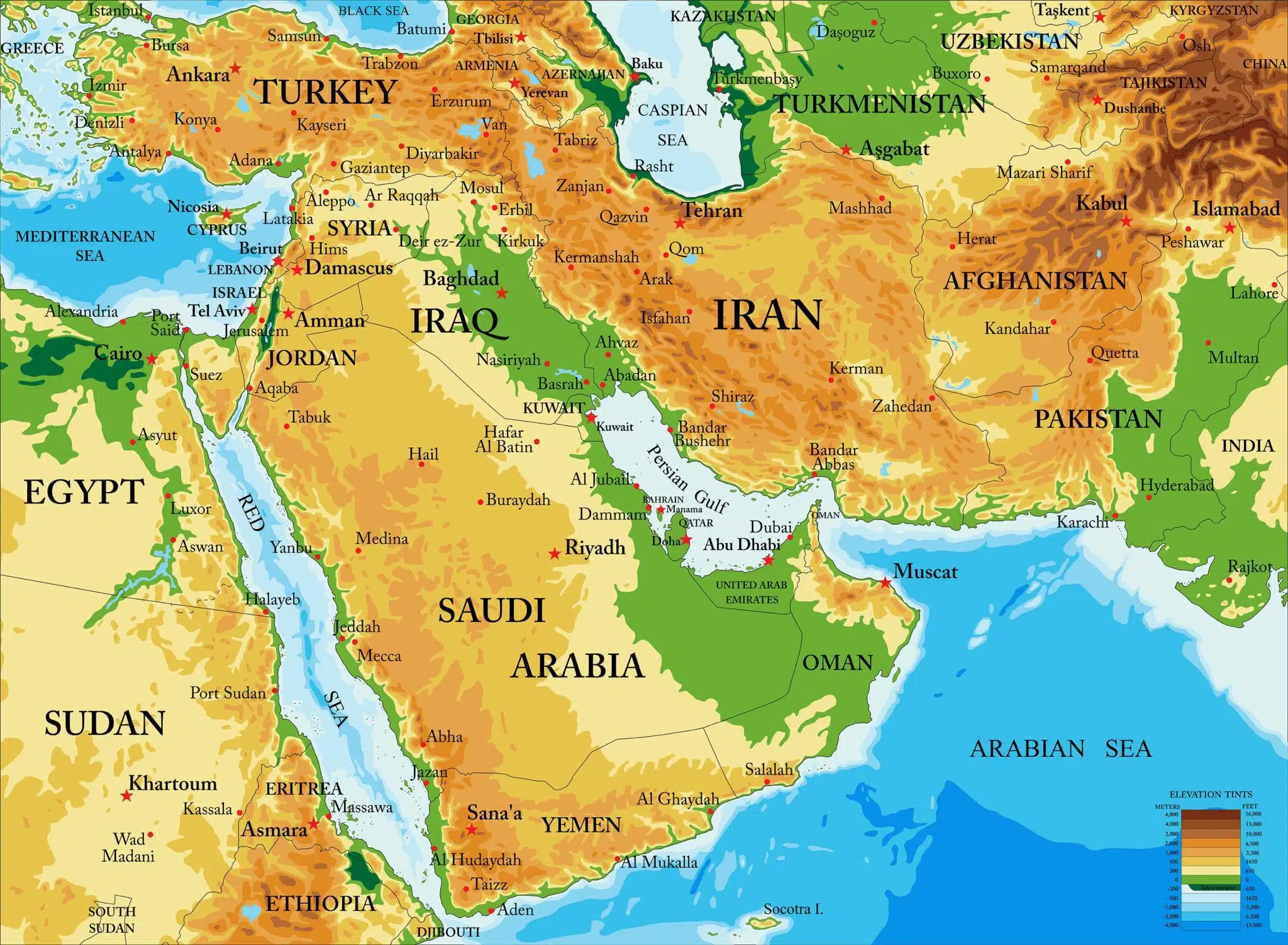Chedorlaomer had ruled the five cities of the plains of the Jordan Valley for 13 years. He defeats four of the five kings of the plains.
For twelve years, the kings of the plains (including those of Sodom and Gomorrah) served King Chedorlaomer. In an earlier event, Chedorlaomer had defeated the Siddim Valley kings and was making them pay a tribute. They had served King Chedorlaomer and paid the required tribute for twelve years. But the thirteenth year they rebelled, refusing to pay the tribute, or tax.
The wars recorded in the Bible are generally fought over land or money. This is the first of several tax revolts. The Kingdom of Israel will later split because the ten northern tribes ask for their taxes to be lowered and are refused (1 Kings 12:3-18). Daniel was the victim of a plot to throw him to lions because he threatened the bureaucracy’s take of tax revenue (Daniel 6:1-4). The incident that caused Assyria to invade, defeat and deport the Kingdom of Israel was a plot by Israel’s King Hoshea to cease paying tribute to Assyria and instead become a vassal of Egypt (2 Kings 17:1-6).
In the fourteenth year, King Chedorlaomer returned with his allies to defeat and to once again subjugate the rebels. Those in covenant affiliation with Chedorlaomer were required to fight with him. The eastern kings defeated several places along their march south to the Dead Sea area. At first, they followed the King’s highway along the mountains east of the Jordan Valley. The mountains provided protection until they came in to the Jordan plains. Instead of simply passing by these cities, the kings conquered each one as they came to them. Marching on the east side of the mountains allowed them to stay out of sight, while replenishing themselves at the expense of the cities they defeated. These are the first four of the six cities who were defeated (vv. 5-6):
(1) First King Chedorlaomer and his allies defeated the Rephaim. These people were listed among the early pre-Israelite inhabitants of the land (e.g., Genesis 15:20). They had all but disappeared by the time of the Exodus (Deuteronomy 1:4, 3:11,13, 2:20, 3:11). Their home was the region of Bashan in the northernmost part of the area east of the Jordan, which is now part of the Golan Heights in northern Israel (Deuteronomy 3:13). Bashan was about 100 miles north of the Dead Sea. The allied armies traveled hundreds of miles to reach this area in northern Israel. This was a natural rendezvous point for the eastern kings. The first four of the six defeated peoples follow:
The Rephaim were a giant people, like the descendants of Anak (Numbers 13:33; Deuteronomy 2:10-11, 3:11-13). Numbers 13:33 says the Anak were part of the Nephalim, mentioned in Genesis 6:4, apparently related to the earth filling with violence. The Rephaim dwelt in Ashteroth-karnaim. These were two distinct but closely neighboring cities. The first was the ancient capital of Bashan (Deuteronomy 1:4; Joshua 9:10). This city derived its name from the Canaanite fertility goddess Ashtoreth (1 Kings 11:5,33). Karnaim (lit. “twin horns or peaks”) is about 2 miles north of ancient Ashtaroth. When the fortunes of Ashtoreth declined, Karnaim took over as the capital of Bashan.
(2) The eastern King Chedorlaomer and his allies continued to march south defeating Zuzim in Ham. The exact location of Ham is unknown; but it was in route to Sodom and Gomorrah, between Bashan (Golan Heights in northern Israel) and Moab’s Shaveh Kiriathaim (plain of Kiriathaim, east of the Dead Sea). The Zuzites were the Zamzummim (Deuteronomy 2:20).
(3) Next, they defeated Emim in Shaveh-kiriathaim. The Emites were from the plain near Kiriathaim, a town in Moab, which is east of the southern Jordan River and Dead Sea (cf. Numbers 32:37; Joshua 13:19; Jerimiah 48:1,23; Ezekiel 25:9). King Chedorlaomer and his allies were following the King’s Highway trade route, conquering cities along the way.
(4) Then they conquered the Horites in their Mount Seir. At one time the Horites were thought to be cave dwellers because the Hebrew word Hor means “cave.” More likely, they were the ancient Hurrians, a non-Semitic people. They inhabited the southern region of Seir (Edom), a mountainous region east of the Dead Sea, and between the Dead Sea and the Gulf of Aqabah. As far as El-paran, which is is Elath on the Gulf of Aqabah. The desert of Paran (Sinai Peninsula southwest of Palestine) is associated with the rejection of Abram’s son Ishmael (Genesis 21:21; Numbers 10:12).
Biblical Text
4 Twelve years they had served Chedorlaomer, but the thirteenth year they rebelled. 5 In the fourteenth year Chedorlaomer and the kings that were with him, came and defeated the Rephaim in Ashteroth-karnaim and the Zuzim in Ham and the Emim in Shaveh-kiriathaim, 6 and the Horites in their Mount Seir, as far as El-paran, which is by the wilderness.
Check out our other commentaries:
-
Numbers 2:17 meaning
The next part of the procession was the tent of meeting (the tabernacle). The Levites, who camped around the tabernacle, were to move out with...... -
Hebrews 6:1-3 meaning
Things like repentance, belief, cleanliness, resurrection, and eternal judgement — these are all basic, foundational aspects of Christianity. They are not signs of mature believers....... -
Exodus 17:8-16 meaning
Another important event happened while the Israelites were at Rephadim. The Amalekites attacked them (8 – 16). Moses ordered Joshua to take an army to...... -
Exodus 24:4-11 meaning
Moses and the elders are called to come before the LORD for worship. The covenant of the LORD is ratified....... -
Deuteronomy 20:10-18 meaning
Moses prescribed regulations concerning how the Israelites are to conduct themselves in war against adversaries that are either far or near.......






